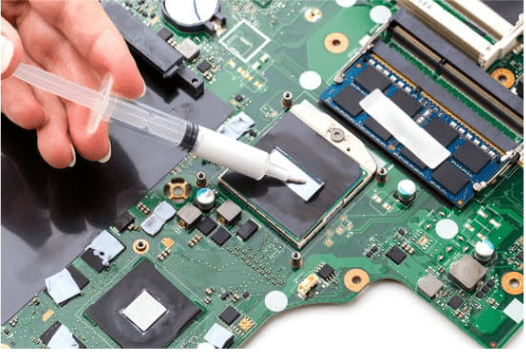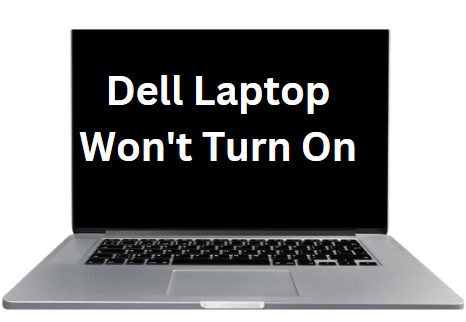Ensuring your laptop battery is fully charged is crucial if you are always on the go. But what if you forgot your laptop charger and your laptop has drained the charge? What Should you do, and may you were in the middle of the project? Don’t worry! I am going to give you a little help!
Do you know that your HDMI can charge your laptop? I know by now you are wondering how that is possible. According to my experience, it is possible, and an HDMI cable once saved me on a business trip.
In this article, I’ll explain how to charge laptop with HDMI cable and what you must remember before attempting it. So, stay intact!
Methods on How to Charge Laptop With HDMI
If you’re struggling to charge your laptop and can’t access a traditional charger, you can use HDMI to get some power. Below are the two methods you can use to charge:
1. Use a Type-C USB port
Charging your laptop with an HDMI cable can be a convenient solution when you’re on the go, but not all laptops support this method. However, if your laptop has a Type-C USB port, you can use a Type-C cable to charge your laptop through the HDMI port. Here’s how:
Step 1: Check if your laptop supports charging via USB Type-C. This information is found in the laptop’s manual or online specifications.
Step 2: Purchase a Type-C to HDMI cable. Ensure the cable is compatible with your laptop’s USB Type-C and HDMI ports.
Step3: Connect the end of the Type-C cable to the laptop’s USB Type-C port and the other to the HDMI port on the TV or monitor.
Step 4: Then turn on the TV or monitor and choose the HDMI input that does correspond to the laptop’s port.
Step 5: Your laptop should automatically start charging. However, if it doesn’t, check the power settings on your laptop and make sure it’s set to charge via USB.
Step 6: Unplug the Type-C cable from the laptop and the TV or monitor once your laptop is fully charged.
It’s important to note that using a Type-C cable to charge your laptop through the HDMI port may provide less power than a traditional charger, so the charging process may be slower.
Additionally, charging your laptop with an HDMI cable can strain the cable and its port, so it’s best to use this method sparingly and only in emergencies.
It’s also important to ensure the cable is secured correctly and not dangling, as this can increase the risk of damage.
2. Use HDMI to HDMI Cable
To charge your laptop with HDMI, you will need an HDMI to HDMI cable and a compatible device with an HDMI port. You need to follow these steps:
#1: Make sure your laptop has an HDMI port. If not, you won’t be able to charge it using this method.
#2: You need to connect the HDMI cable on one end to the HDMI on your laptop port.
#3: Connecting to the other end is essential if you have a compatible device with an HDMI port, such as a TV or a monitor.
#4: Turn on the device you connected the HDMI cable to. This will allow power to flow through the cable and into your laptop.
Step 5: Check your laptop’s battery icon to confirm that it is charging. If it is not charging, ensure the cable is connected correctly and the device you connected it to is turned on.
Step 6: Once your laptop is fully charged, disconnect the HDMI cable from the laptop and the device you connected it to.
It’s important to note that while this method may work for some laptops, there are other options for some laptops.
Additionally, charging your laptop using HDMI may not be as efficient or fast as using a traditional charger.
Suppose your laptop is low on battery and you need to use it for an extended period. In that case, it’s recommended to use a dedicated charger to ensure the battery charges properly and quickly.
Read More: My Hp Laptop Won’t Turn On: Simple Methods to Solve the Issue
Is it Safe?
Charging your laptop with HDMI is generally safe using a compatible device with an HDMI port. However, it may not be as efficient or fast as a traditional charger.
Not all laptops support charging through HDMI, and using this method can potentially damage your laptop’s battery over time.
Using a dedicated charger whenever possible is recommended to ensure your laptop’s battery is charged correctly and maintained.
Also Read: How to Fix CPU Over Temperature Error
The Demerits of Charging Laptop With HDMI
Charging a laptop with an HDMI cable has some demerits that are important to consider before attempting it. Here are some of them:
1. Incompatibility: Not all laptops support charging via HDMI. It’s crucial to check if your laptop is compatible with this method.
2. Slow charging: Charging a laptop with an HDMI cable can be slower than using a traditional charger, and it may need to provide more power to charge the laptop while it’s in use.
3. The strain on the cable and port: Using an HDMI cable to charge a laptop can strain the cable and the laptop’s HDMI port, potentially leading to damage over time.
4. No data transfer: Charging a laptop with an HDMI cable doesn’t provide data transfer capabilities, which can be a significant disadvantage.
5. Potential overheating: Charging a laptop with an HDMI cable can lead to overheating, which can cause damage to the battery and other components.
Read More: MSI vs. Alienware: Which Gaming Laptop Brand Reigns Supreme?
Conclusion
Charging your laptop with an HDMI cable is a great way to ensure you are never without power. It is a simple process that requires only an HDMI cable and either an HDMI to HDMI or an HDMI to Type-C adapter.
By connecting one end of the HDMI to the output port of the applicable device and then plugging in the other end into the input port of your laptop, you can charge your laptop quickly and easily. With this method, you will never have to worry about running out of power again!



